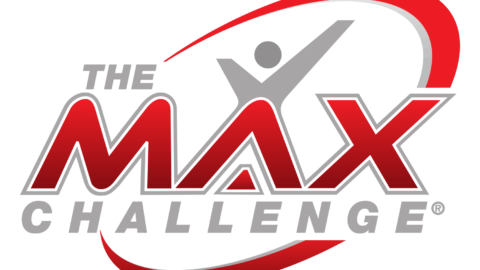As you are probably aware, there are several different types of exercises we perform at the MAX. On Mondays and Wednesdays, and Fridays we focus primarily on aerobic activities, while on Tuesdays and Thursdays we focus more on strength training of the upper and lower body. Within each of these exercise days, some exercises are slow, deliberate and without impact while others are brief rapid-paced, explosive exercises done until we simply cannot do anymore.
There are various types of exercises that affect our bodies differently. Done in combination, this affords you the most “bang for your buck”. By changing up the type, frequency, intensity and cardiovascular demand in your exercise regimen on a daily basis, you will have a synergist effect and derive numerous benefits from your exercise.
This week we will address the first major distinction between types of exercise. Aerobic exercise, or those exercises that utilize oxygen for energy versus anaerobic exercise, or those exercises that utilize fuel already present in the muscle for energy.
Aerobic exercises:
In this type of exercise, our muscles require the oxygen carried in the blood to be used for energy production. Our muscles use this oxygen to burn both fat and carbohydrates as fuel. Fuel can be constantly produced in the presence of oxygen, therefore, aerobic exercise can be sustained for a prolonged period of time. The body reacts accordingly by increasing the heart rate and breathing rate to keep up with the muscle oxygen demand. Over time with training, our muscles become more efficient at extracting oxygen from the blood stream and thus we become “fitter”. When this happens, you will notice that you will be able to exercise at a higher intensity without feeling winded or noticing a significant increase in your heart rate. During aerobic exercise, you should feel slightly out of breath, but be able to carry out a conversation.
Some benefits of aerobic exercise includes:
- Improved overall level of fitness
- Improved mood
- Possible reduction of
- Cancer risk
- Cardiovascular disease
- Osteoporosis
- Diabetes
- Higher level of fat burning (as opposed to anaerobic exercises)
- Improved bone density (less beneficial then anaerobic exercises)
- Moderate reduction in blood pressure
- Decreased insulin resistance
- Increases likelihood of surviving a heart attack
Anaerobic exercise:
In contrast to aerobic exercise, anaerobic exercise is exercise performed without oxygen. This type of exercise is performed at a higher level of intensity and can only be sustained for a few moments. Sprinting and heavy weight lifting are two examples of anaerobic exercise. Anaerobic exercises utilize the energy that is already present in the muscle tissue. However, because no oxygen is present to produce more energy, these exercises cannot be sustained once the fuel present in the muscle runs out after about 10-15 seconds.
Some benefits of Anaerobic exercise:
- Strengthen bones and improves bone density
- Builds and maintains lean muscle mass
- Burns fat (though less so then an aerobic exercise)
- Increases performance in sports by increasing strength, speed and power
One type of anaerobic exercise, which is frequently incorporated in the MAX is a called Plyometric exercise.
Plyometric Exercises:
These types of explosive exercises are known as plyometric exercises (jump training). This type of exercise uses your own weight and the force of gravity to provide resistance during the exercise. The reason to incorporate these exercises into our exercise regimen is that plyometric exercise helps to develop explosive power and increase agility.
Without getting too technical, plyometric exercises are based on the muscle stretch reflex.
Whenever a muscle is stretched, a signal is sent to the nervous system that indicates that the muscle has been stretched. The nervous system processes this signal and stimulates the muscle to contract in response to this stretch. This is a reflex because the response is instantaneous. Over time and with training, the fibers in the muscle (fast twitch fibers) become more sensitive to the stretch and maximize the speed and number of motor units that respond to the stretch. By increases the fiber number and sensitivity, the muscle response becomes more explosive and generates more power.
Numerous studies have demonstrated that plyometric training should start slowly and work up gradually in intensity. Plyometric training can be general such as jumping, jump squats, jump lunges but can also be more sports specific depending on the activities you would like to improve. Typically plyometric exercises tend to focus on the lower body and utilize muscles around the knee and hip. However, the use of medicine balls allow for plyometric activities of the shoulders and arms.
It is very important to warm up properly to increase the flexibility of the muscle and connective tissues around the joints to prevent injury. While participating in the MAX is it imperative that you slowly add in and increase your plyometric exercises when you feel your body can handle the impact. For example, start off doing stepping jumping jacks and then gradually add in 1 jumping jack for every 5 stepping jacks. Over a period of days to weeks, continue to add more jumping jacks and decrease the amount of stepping jacks. Once you are able to comfortably complete a minute of jumping jacks without any pain or significant shortness of breath, you can start adding in superman jacks. Again add 1 superman jack for every 5-10 jumping jacks and gradually increase the amount of superman jacks. Since this is a anaerobic, plyometric exercise, if you are doing them correctly, you will only be able to do about 10-15 seconds of this until you become winded and need to take a break.
Next week we will discuss the different types of muscle contractions and why varying your exercise types during weight training will positively affect your progress.
Disclaimer. The information provided here is not intended to substitute for medical care and should not be used for treatment or diagnosis. If you have, or suspect you have a problem concerning your health please consult with a licensed healthcare professional.



